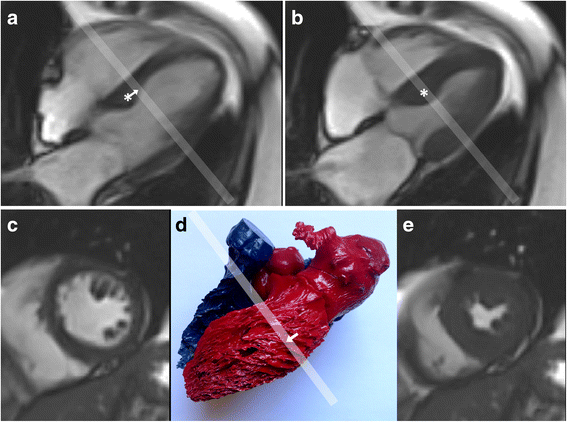Principles of cardiovascular magnetic resonance feature tracking and echocardiographic speckle tracking for informed clinical use
- PMID: 27561421
- PMCID: PMC5000424
- DOI: 10.1186/s12968-016-0269-7
Principles of cardiovascular magnetic resonance feature tracking and echocardiographic speckle tracking for informed clinical use
Abstract
Tissue tracking technology of routinely acquired cardiovascular magnetic resonance (CMR) cine acquisitions has increased the apparent ease and availability of non-invasive assessments of myocardial deformation in clinical research and practice. Its widespread availability thanks to the fact that this technology can in principle be applied on images that are part of every CMR or echocardiographic protocol. However, the two modalities are based on very different methods of image acquisition and reconstruction, each with their respective strengths and limitations. The image tracking methods applied are not necessarily directly comparable between the modalities, or with those based on dedicated CMR acquisitions for strain measurement such as tagging or displacement encoding. Here we describe the principles underlying the image tracking methods for CMR and echocardiography, and the translation of the resulting tracking estimates into parameters suited to describe myocardial mechanics. Technical limitations are presented with the objective of suggesting potential solutions that may allow informed and appropriate use in clinical applications.
Keywords: Cardiac mechanics; Cardiovascular magnetic resonance; Feature tracking; Myocardial deformation; Strain.
Figures


References
-
- Singh A. Optic flow computation: a unified perspective. Los Alamitos: IEEE Computer Society Press; 1991.
-
- Barron JL, Fleet DJ, Beauchemin SS. Performance of optical flow techniques. Int J Comput Vis. 1994;12:43–77. doi: 10.1007/BF01420984. - DOI
-
- Adrian RJ. Particle-Imaging Techniques for Experimental Fluid Mechanics. Annu Rev Fluid Mech. 1991;23:261–304. doi: 10.1146/annurev.fl.23.010191.001401. - DOI
-
- Willert CE, Gharib M. Digital particle image velocimetry. Exp Fluids. 1991;10:181–193. doi: 10.1007/BF00190388. - DOI
Publication types
MeSH terms
LinkOut - more resources
Full Text Sources
Other Literature Sources
Medical

